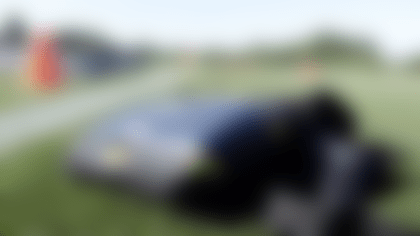In 2015, the American Academy of Pediatrics (AAP) released a policy statement about football after its national conference.
It focused on seven recommendations:
- Officials and coaches must ensure proper enforcement of the rules of the game. A significant number of concussions and catastrophic injuries occur because of improper and illegal contact, such as spear tackling. There is a culture of tolerance of head first, illegal hits. This culture has to change to one that protects the head for both the tackler and those players being tackled. Stronger sanctions for contact to the head, especially of a defenseless player, should be considered, up to and including expulsion from the game. The culture should change to one of zero tolerance of illegal, head-first hits.
- Removing tackling from football altogether would likely lead to a decrease in the incidence of overall injuries, severe injuries, catastrophic injuries, and concussions. The American Academy of Pediatrics recognizes, however, that the removal of tackling from football would lead to a fundamental change in the way the game is played. Participants in football must decide whether the potential health risks of sustaining these injuries are outweighed by the recreational benefits associated with proper tackling.
- The expansion of nontackling leagues for young athletes who enjoy the game of football and want to be physically active but do not want to be exposed to the collisions currently associated with the game should be considered by football leagues and organizations. This would allow athletes to choose to participate in football without tackling and its associated risks, even after the age at which tackling is introduced.
- Although the effect of subconcussive blows on long-term cognitive function, incidence of CTE, and other health outcomes remains unclear, repetitive trauma to the head is of no clear benefit to the game of football or the health of football players. If subconcussive blows to the head result in negative long-term effects on health, then limiting impacts to the head should reduce the risk of these long-term health problems. Thus, efforts should be made by coaches and officials to reduce the number of impacts to the head that occur during participation in football. Further research is needed in this area.
- Delaying the age at which tackling is introduced to the game would likely decrease the risk of these injuries for the age levels at which tackling would be prohibited. Once tackling is introduced, however, athletes who have no previous experience with tackling would be exposed to collisions for the first time at an age at which speeds are faster, collision forces are greater, and injury risk is higher. Lack of experience with tackling and being tackled may lead to an increase in the number and severity of injuries once tackling is introduced. Therefore, if regulations that call for the delaying of tackling until a certain age are to be made, they must be accompanied by coaches offering instruction in proper tackling technique as well as the teaching of the skills necessary to evade tackles and absorb being tackled. It is unclear whether such techniques and the neuromuscular control necessary for performing them can be adequately learned in the absence of contact.
- Although definitive scientific evidence is lacking, strengthening of the cervical musculature will likely reduce the risk of concussions in football by limiting the acceleration of the head after impact. Physical therapists, athletic trainers, or strength and conditioning specialists, with expertise in the strengthening and conditioning of pediatric athletes, are best qualified to help young football players achieve the neck strength that will help prevent injuries.
- Given their importance in the medical management of sport-related injuries and preliminary evidence suggesting an association between athletic trainers presence and a decreased incidence of sport-related injuries,113 efforts should be made by football teams to have athletic trainers at the sidelines during organized football games and practices.
In a statement about the decision, the AAP said:
"Delaying the introduction of tackling until a certain age may reduce the risk of injury for ages when tackling is prohibited, but this could lead to even higher rates of injury when tackling is later introduced if players have their first tackling experiences when they are older, stronger and bigger."
"It's this paradox," said pediatrician Greg Landry, MD, FAAP in that same release, "that makes it so important for leagues to teach proper tackling technique and skills to avoid and absorb tackles, even if no tackling occurs throughout the seasons."











